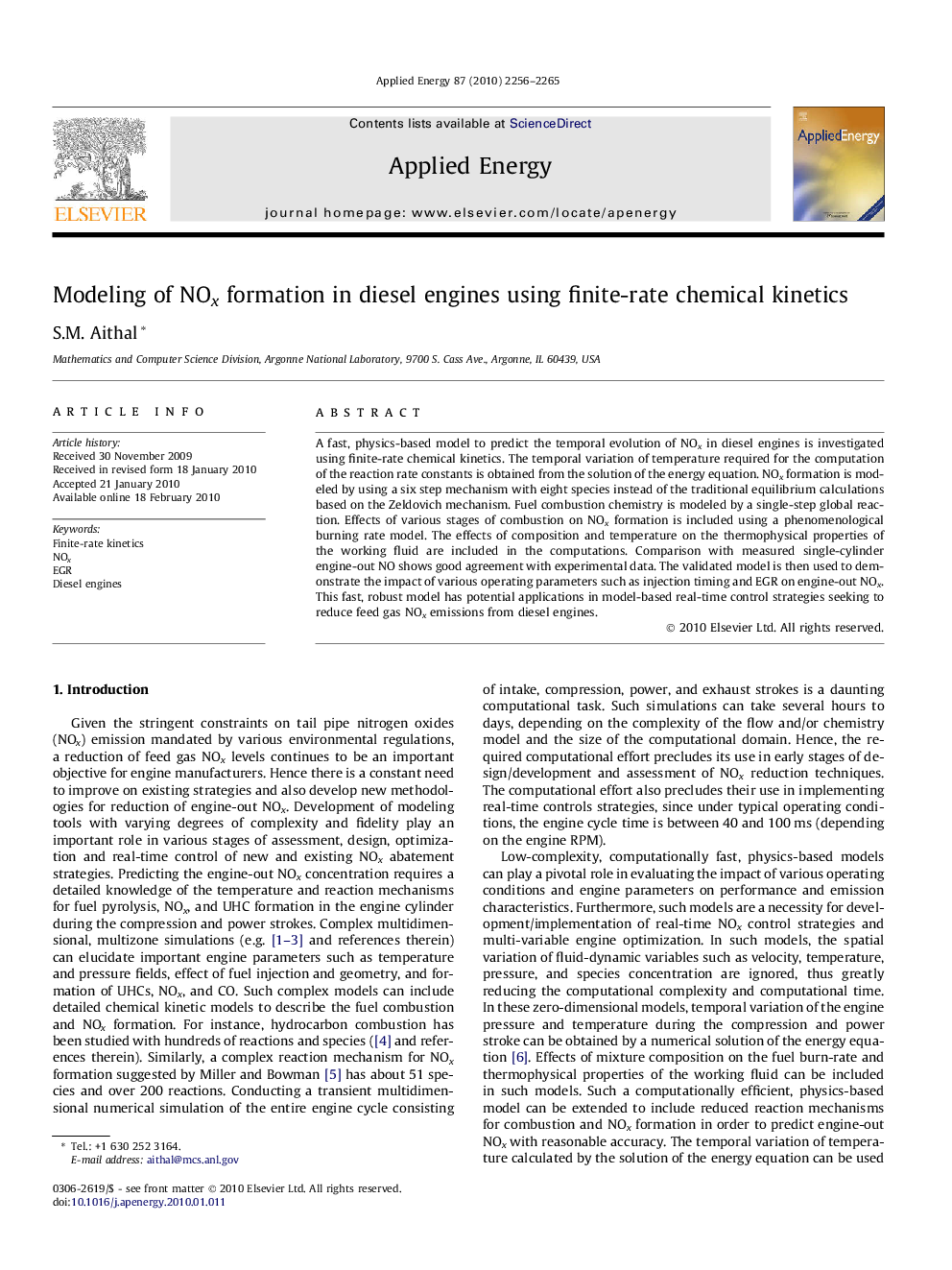| Article ID | Journal | Published Year | Pages | File Type |
|---|---|---|---|---|
| 244796 | Applied Energy | 2010 | 10 Pages |
A fast, physics-based model to predict the temporal evolution of NOx in diesel engines is investigated using finite-rate chemical kinetics. The temporal variation of temperature required for the computation of the reaction rate constants is obtained from the solution of the energy equation. NOx formation is modeled by using a six step mechanism with eight species instead of the traditional equilibrium calculations based on the Zeldovich mechanism. Fuel combustion chemistry is modeled by a single-step global reaction. Effects of various stages of combustion on NOx formation is included using a phenomenological burning rate model. The effects of composition and temperature on the thermophysical properties of the working fluid are included in the computations. Comparison with measured single-cylinder engine-out NO shows good agreement with experimental data. The validated model is then used to demonstrate the impact of various operating parameters such as injection timing and EGR on engine-out NOx. This fast, robust model has potential applications in model-based real-time control strategies seeking to reduce feed gas NOx emissions from diesel engines.
